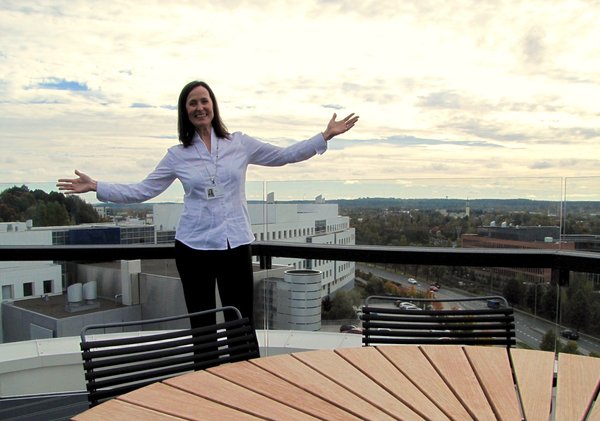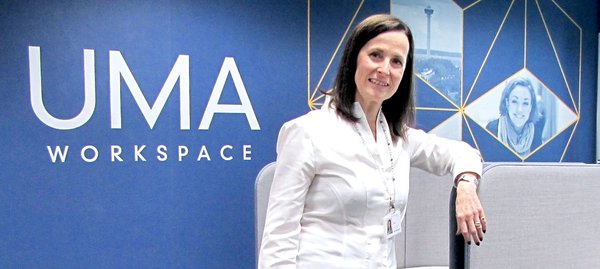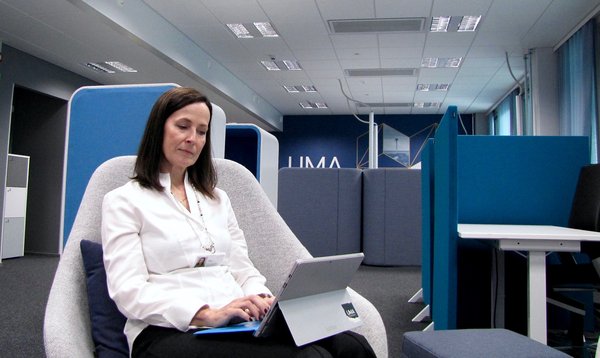Tampere Region close to heart
20.10.2016Times are getting interesting in the Tampere Region with the possibility of the region becoming a winner in the era of digitalisation. These are the words of Director Satu Eskelinen of Technopolis Tampere, who is a sworn developer of Tampere and the Tampere Region.

Satu Eskelinen enjoys working in a fast-growing business. She started as the director of the Tampere Unit of the real estate company Technopolis in 2007 and has contributed to the company’s substantial growth. Today, the business operations are already sevenfold, and Technopolis Tampere has either constructed or bought a new building on average every year.
“Tampere is unique in this sense. This development would not be even possible in very many Finnish cities. We are very busy, but it’s all positive and we get things done,” says Eskelinen.
Technopolis rents out office space for companies and, in doing so, creates communities where the companies can get a boost from each other’s success. There are many fast-growing companies among Technopolis’ customers that value flexibility to a great extent.
“There is always some sort of move going on or a wall being relocated as we cater to the changing needs of our customers,” says Eskelinen.
Times are getting interesting in the Tampere Region as competence previously occupied by Nokia and Microsoft has now sparked the interest of companies in Finland and abroad. This has not gone unnoticed at Technopolis’ buildings, where a great number of new small businesses, including international newcomers, have set up their offices in the recent years.
“The big and strong Nokia has spread out seeds that have landed in good soil – into new and existing companies. Now, the Tampere Region has great potential for becoming a winner in the era of digitalisation,” says Eskelinen.
Eskelinen points out that the Tampere Region is not shedding its skin for the first time. Entire industrial sectors have flourished and withered, but something new has always come to replace them. The Tampere Region is ideal in size for such development work.
“Big enough and growing strong; still, it is easy, for example, to find someone you know or someone known by someone you know from every company – you never need to look for a connection via too many persons,” says Eskelinen.

Hervanta holds a special place in the eyes of Eskelinen, even though she is a sworn promoter of activeness and well-being of the whole Tampere Region. Eskelinen was involved in setting up the Hervanta Works cooperation with the goal of putting Hervanta on the world map, no less. The first task was to get the area’s companies better acquainted with each other.
“The Lähtölaukaus (Starting shot) event in February was attended by over a hundred companies, and now would be the ideal time to start preparing some other activity.
According to Eskelinen, polishing the brand of Hervanta is not difficult because the area has it all: great companies, excellent university and Finland’s best cluster of fast-growing companies on Hermiankatu street. In addition, the surrounding region provides many kinds of activities with links to Hervanta.
“You only need to get the word out,” says Eskelinen.
For example, technology giant Huawei landed in Hervanta recently. Its new research and product development unit is located in Kampusareena – so not in the premises of Technopolis, which would have been the solution preferred by Eskelinen.
“The most important thing is, however, that Huawei was finally landed here after some serious effort. It strengthens the Tampere University of Technology, Hervanta and the ecosystem of the entire region in a great way.”
The development of outwards communications is something Eskelinen would also like to see throughout the region. If everybody – both private and public actors – would communicate similar messages on the national level, their impact would be far greater.
Among the key messages, Eskelinen would choose those most important to her customers: the availability of competent employees and the international accessibility of the region. Current practical matters include the merger of the universities and the development of the air traffic of Tampere-Pirkkala.
“We have to have direct flights and our own international airport in order to keep the Tampere Region on the map. The Helsinki Airport and a fast train connection are not sufficient for this.

Technopolis has four campuses in Tampere. The popular Yliopistonrinne in the city centre of Tampere was supplemented with two new buildings this summer – and, when you talk about a building at Technopolis, it involves a lot more than just the building itself.
“The heart and soul of the place are its reception and restaurant,” says Eskelinen.
The reception services are provided by Technopolis and its own people take care of most of the practical matters of the building: reception of visitors, management of maintenance requests and their follow-up, answering thousand different questions… The restaurant, on the other hand, makes sure that all meals are enjoyable in terms of taste, comfort and convenience. Eskelinen also mentions real estate management, maintenance, upkeep of the outside areas and cleaning.
“These are all needed and everything must run so smoothly that you pay no notice to it. The fact is that our buildings are either head or branch offices of over 200 companies and, thus, a part of their image,” says Eskelinen.
The change in the ways of working is a phenomenon that Eskelinen observes closely in her work. People are far more mobile in their work than before and, at some workplaces, half of the desks may be empty all the time. Employees visit customers, attend meetings or work remotely. For this reason, an increasing number of employers is interested in a multi-space office with no appointed places for the employees.
“Everybody selects the space that best suits what he or she is doing at the moment and what degree of silence is required.”
The trend takes us towards a multi-space office, but some of the companies are clearly swimming against the tide, wanting offices for their employees, though usually smaller than before.” According to Eskelinen, the main thing is that the place of work enables the best possible work efficiency.
“It is easy to see how a well designed office space increases the comfort and motivation of people and, thus, improves the image of the company and employer. We have many great examples of this.”
Translation: Lingoneer
Read this article in Finnish >